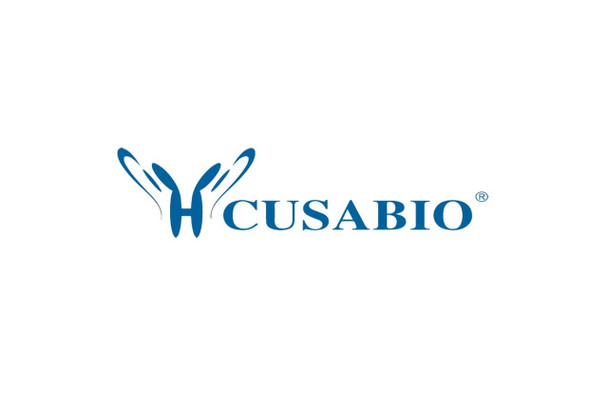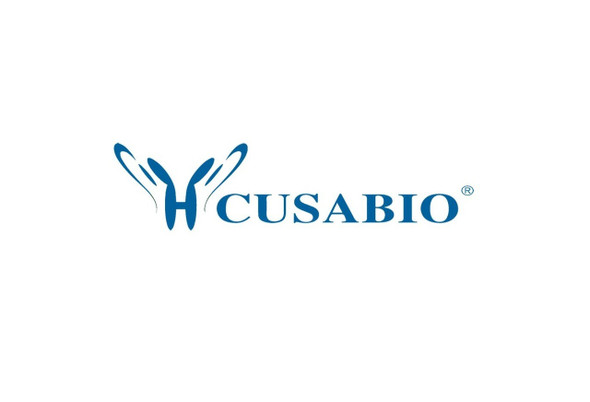Cusabio Human Recombinants
Recombinant Human Serine/threonine-protein kinase PAK 5 (PAK5), partial | CSB-BP885798HU
- SKU:
- CSB-BP885798HU
- Availability:
- 3 - 7 Working Days
Description
Recombinant Human Serine/threonine-protein kinase PAK 5 (PAK5), partial | CSB-BP885798HU | Cusabio
Alternative Name(s): p21-activated kinase 5 Short name: PAK-5 p21-activated kinase 7 Short name: PAK-7
Gene Names: PAK5
Research Areas: Cancer
Organism: Homo sapiens (Human)
AA Sequence: MFGKKKKKIEISGPSNFEHRVHTGFDAQEQKFTGLPQQWHSLLADTANRPKPMVDPSCITPIQLAPMKTIVRGNKPCKETSINGLLEDFDNISVTRSNSLRKESPPTPDQGASSHGPGHAEENGFITFSQYSSESDTTADYTTEKYREKSLYGDDLDPYYRGSHAAKQNGHVMKMKHGEAYYSEVKPLKSDFARFSADYHSHLDSLSKPSEYSDLKWEYQRASSSSPLDYSFQFTPSRTAGTSGCSKESLAYSESEWGPSLDDYDRRPKSSYLNQTSPQPTMRQRSRSGSGLQ
Source: Baculovirus
Tag Info: N-terminal 6xHis-tagged
Expression Region: 1-293aa
Sequence Info: Partial
MW: 34.9 kDa
Purity: Greater than 90% as determined by SDS-PAGE.
Relevance: Serine/threonine protein kinase that plays a role in a variety of different signaling pathways including cytoskeleton regulation, cell migration, proliferation or cell survival. Activation by various effectors including growth factor receptors or active CDC42 and RAC1 results in a conformational change and a subsequent autophosphorylation on several serine and/or threonine residues. Phosphorylates the proto-oncogene RAF1 and stimulates its kinase activity. Promotes cell survival by phosphorylating the BCL2 antagonist of cell death BAD. Phosphorylates CTNND1, probably to regulate cytoskeletal organization and cell morphology. Keeps microtubules stable through MARK2 inhibition and destabilizes the F-actin network leading to the disappearance of stress fibers and focal adhesions.
Reference: "p21-Activated kinase 5 (Pak5) localizes to mitochondria and inhibits apoptosis by phosphorylating BAD."Cotteret S., Jaffer Z.M., Beeser A., Chernoff J.Mol. Cell. Biol. 23:5526-5539(2003)
Storage: The shelf life is related to many factors, storage state, buffer ingredients, storage temperature and the stability of the protein itself. Generally, the shelf life of liquid form is 6 months at -20?/-80?. The shelf life of lyophilized form is 12 months at -20?/-80?.
Notes: Repeated freezing and thawing is not recommended. Store working aliquots at 4? for up to one week.
Function:
Involvement in disease:
Subcellular Location:
Protein Families:
Tissue Specificity:
Paythway:
Form: Liquid or Lyophilized powder
Buffer: If the delivery form is liquid, the default storage buffer is Tris/PBS-based buffer, 5%-50% glycerol. If the delivery form is lyophilized powder, the buffer before lyophilization is Tris/PBS-based buffer, 6% Trehalose, pH 8.0.
Reconstitution: We recommend that this vial be briefly centrifuged prior to opening to bring the contents to the bottom. Please reconstitute protein in deionized sterile water to a concentration of 0.1-1.0 mg/mL.We recommend to add 5-50% of glycerol (final concentration) and aliquot for long-term storage at -20?/-80?. Our default final concentration of glycerol is 50%. Customers could use it as reference.
Uniprot ID: Q8TB93
HGNC Database Link: N/A
UniGene Database Link: N/A
KEGG Database Link: N/A
STRING Database Link: N/A
OMIM Database Link: N/A










